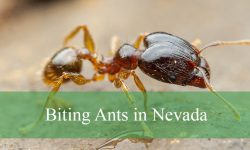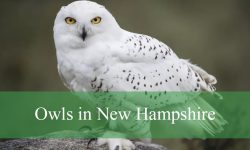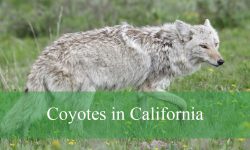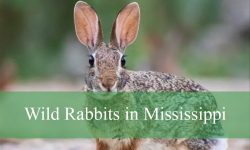Certain avian species feature feathers that protrude from the crown of their heads, resembling a mohawk; this ornamental feature is known as a “crest.” Crests serve various purposes, such as attracting mates, facilitating communication, and engaging in territory disputes. Thanks to the forces of natural selection and the adaptation of birds to their environments, crests exhibit a diverse array of shapes and sizes. Whether sizable or petite, matching the surrounding feathers or standing out in a distinct hue, the characteristics of crests are species-specific.
The article below will continue to explore to find 30 amazing bird species with their unique mohawk feathers.
Different types of Birds with Mohawks
Great Curassow
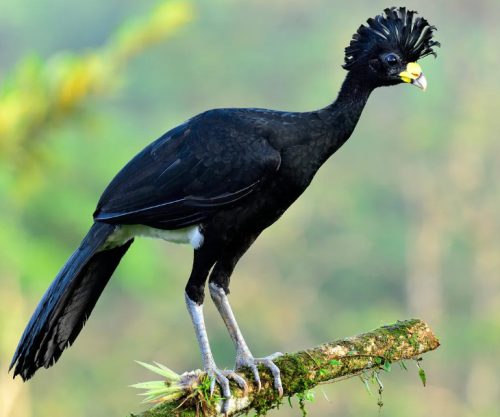
Known by its scientific name, Crax rubra, the Great Curassow is a large species of bird found in the tropical woods of Central and South America, ranging from Mexico to Ecuador. It has a unique look, with a black body and a white belly that contrast, and a mohawk-like feather crest on top of its head. The Great Curassow is a quiet bird, yet you can see it browsing the branches for fruits and insects.
Grey Crowned Crane
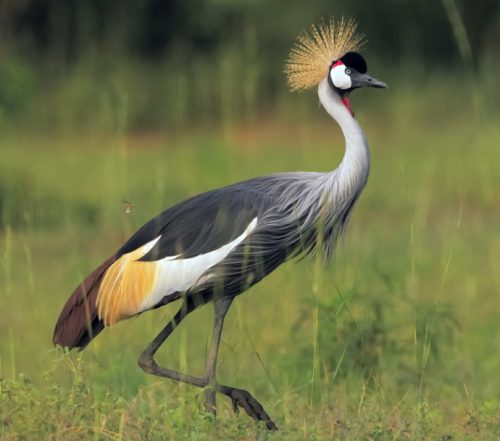
Scientifically known as Balearica regulorum, the Grey Crowned Crane is a majestic bird that is native to eastern and southern Africa. They are usually white with grey wings, and they have a red or orange patch on top of their heads. A distinctive characteristic that sometimes resembles a mohawk, it is named after the crown-like tuft of feathers atop their heads.
White-Crested Helmetshrike
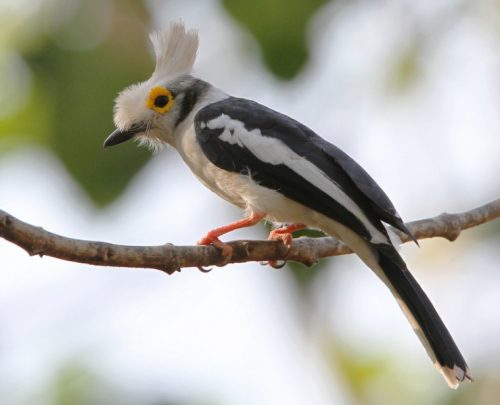
An intriguing bird that is native to several African countries, such as Angola, Benin, Botswana, Burkina Faso, Burundi, Cameroon, and the Central African Republic, is the White-Crested Helmetshrike (Prionops plumatus). These birds are easily identified by their characteristic white mohawk-like crest. Their stunning black and white plumage adds to their remarkable appearance in the many landscapes they call home throughout the African continent.
Guianan Cock-Of-The-Rock
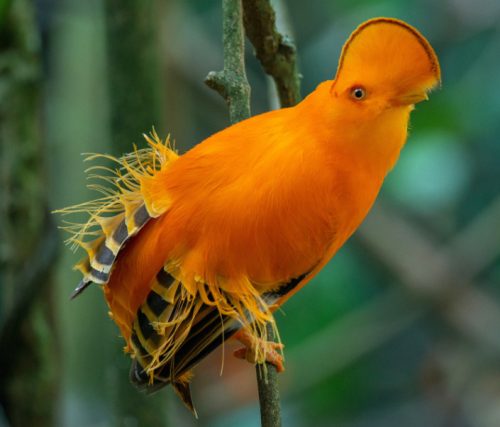
Scientifically known as Rupicola rupicola, the Guianan Cock-of-the-Rock is a fascinating bird of South America that is found mostly in the Guianan Shield, which includes parts of French Guiana, Suriname, Guyana, and southern Venezuela. The brilliant orange crest, which stretches from the head down the bird’s back and is well-known for its distinctive mohawk, stands out strikingly against the black feathers that cover the remainder of its body. The ladies also have a smaller crest, but the male has the most noticeable mohawk.
Northern Cardinal
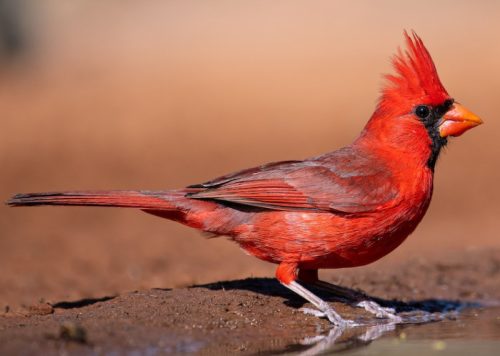
The Northern Cardinal, scientifically labeled Cardinalis cardinalis, is a well-known North American bird recognized for its vibrant red plumage. While both sexes display red feathers, males boast a brighter hue. Complementing their striking coloration, Northern Cardinals feature a distinctive black mask encircling their eyes. Widespread throughout the eastern United States and extending south into Mexico and Central America, these birds contribute to the lively avian diversity of their habitats.
Palm Cockatoo
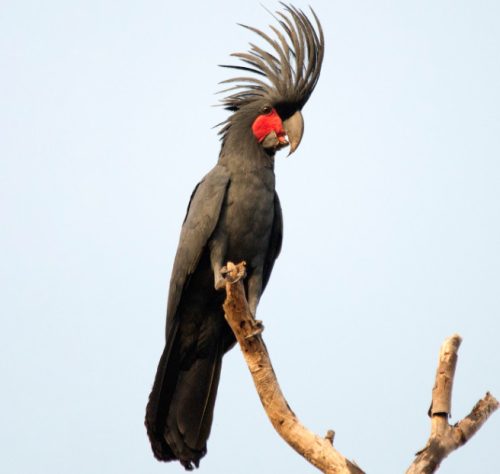
Known by its scientific name Probosciger aterrimus, the palm cockatoo is a large black parrot that is indigenous to Papua New Guinea, the Aru Islands, and the Cape York Peninsula in northern Australia. These birds, who are well-known for their unique characteristics, have a red crest that resembles a Mohawk and gives them a lively appearance. Apart from their attractive appearance, Palm Cockatoos are known for their exceptional capacity to mimic human speech.
Philippine Eagle
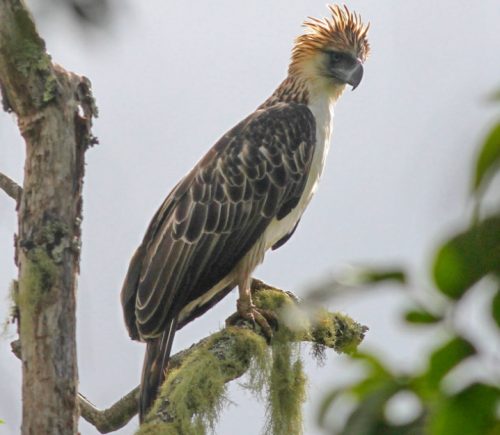
Pithecophaga jefferyi, the scientific name for the majestic Philippine Eagle, is a predatory bird that lives in the woods of Mindanao, Samar, Luzon, and Leyte in the Philippines. With a formidable body length of up to 3.5 feet and an astounding wingspan of up to 7.5 feet, this enormous raptor is truly stunning. The Philippine Eagle, an apex predator, is essential to preserving the natural equilibrium of its natural environments.
Pileated Woodpecker
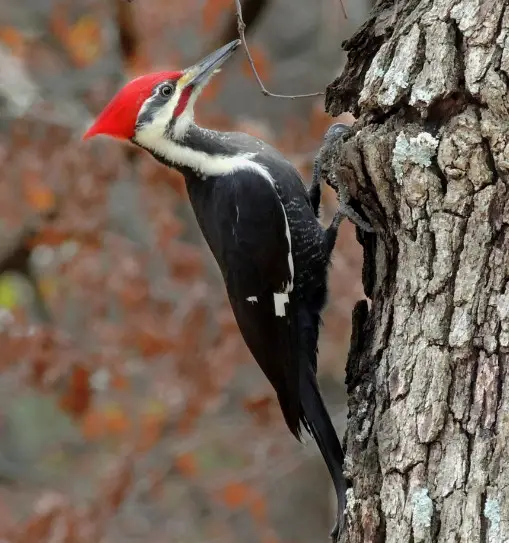
The Pileated Woodpecker, scientifically identified as Dryocopus pileatus, is among the most recognizable birds with a mohawk, native to North America. As one of the world’s largest woodpeckers, it is found in Canada and western Washington. The distinctive black and white mohawk of the Pileated Woodpecker, coupled with its striking red crest, adds to its distinct appearance.
Wood Duck
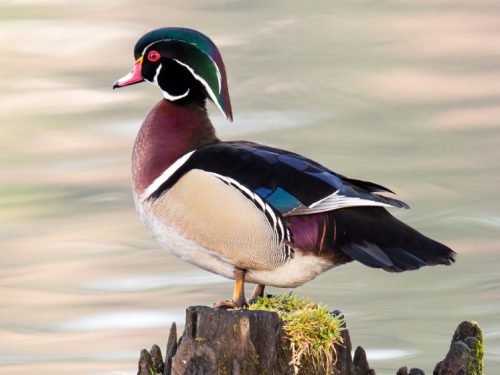
The Wood Duck, or Aix sponsa, is a popular bird in North America that is admired for its unusual look, which has been compared to a work of art. Their heads are well-known for their distinctive “mohawk,” which is a brilliant display of colors ranging from red to green. The sides of their necks are highlighted by white stripes, which add to the Wood Duck’s overall eye-catching and vibrant plumage.
Bare-Faced Go-Away Bird
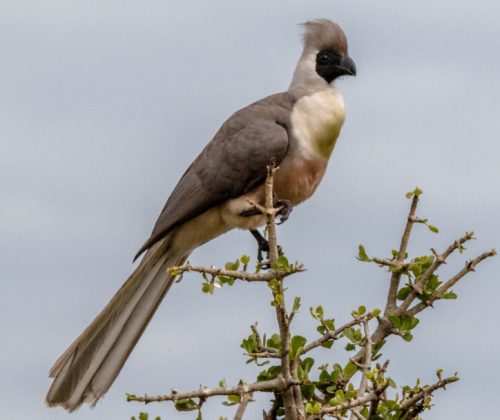
The bare-faced go-away bird, scientifically known as Corythaixoides personatus, is a distinctive avian species native to Africa. Its habitat spans the Republic of the Congo, Kenya, Malawi, Rwanda, Tanzania, Uganda, and Zambia. Renowned for its unique call resembling “go away,” this bird boasts a gray bare face and a striking black crest resembling a mohawk, serving as a key feature in attracting potential mates. With a range spanning several African nations, the bare-faced go-away bird captivates observers with both its vocalizations and visually striking physical characteristics.
Sulphur-Crested Cockatoo

The sulphur-crested cockatoo (Cacatua galerita) is a striking bird characterized by its white plumage and distinctive yellow crest. This species is native to Sulphur-crested regions, spanning Australia, Indonesia, New Guinea, the Aru Islands, and New Zealand. Renowned for its vibrant appearance, the sulphur-crested cockatoo thrives in diverse ecosystems, captivating observers with its charismatic presence and widespread distribution across the Southern Hemisphere.
Cockatiel
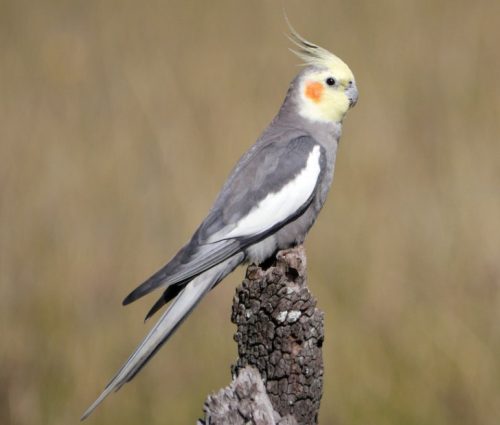
The scientific name for the little, parrot-like Australian bird is Nymphicus hollandicus, or cockatiel. Cockatiels have become one of the most popular pet birds in the world thanks to their friendly nature and amazing ability to mimic human speech. They don’t all have mohawks, but it’s a common characteristic. Individuals with mohawks frequently have yellow or white feathers on their heads, which contrasts with their body’ general gray hue.
Crested Duck
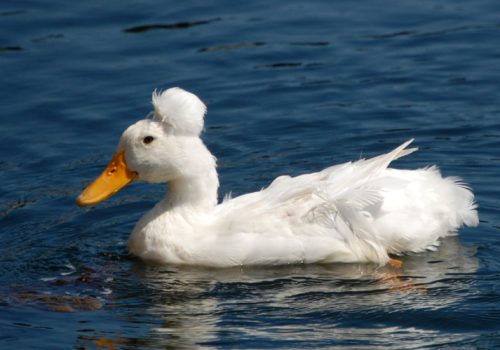
Native to South America, the Crested Duck is also known by its scientific name, Anas platyrhynchos domesticus. They’re not the only birds with a mohawk, but they’re the most well-known. These ducks are so called because of the characteristic feather crest that crowns their heads, which they may raise or lower as they choose. The puffiness of the feathers on the head of a Crested Duck emphasizes the mohawk, making it stand out and be visually striking. These South American waterfowl are a remarkable species in the bird realm because of their distinctive trait, which enhances their beauty.
Crested Partridge
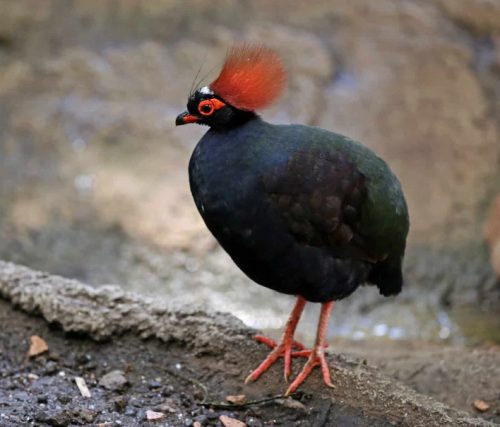
The scientific name for the Crested Partridge is Rollulus rouloul, and it is found in the hilly parts of central Asia. Specifically, it is found in lowland rainforests in Borneo, Malaysia, south Thailand, south Burma, and Sumatra. Distinguished by a characteristic mohawk of black feathers that reaches from the top of their heads to the end of their tails, these birds make a visually arresting impression in their verdant forest environments.
Dalmatian Pelican

Known by its scientific name Pelecanus crispus, the Dalmatian Pelican is a big species of bird found in Europe, Russia, India, and China. It prefers small lakes and wetlands. Even though they are primarily white, their wings and back have noticeable black patches. Their erect, long, black feathers that resemble a mohawk haircut make up their most remarkable feature—their mohawk-like crest. The Dalmatian Pelican is distinguished by its distinctive crest, which serves as a mode of communication and a tool for attracting potential mates.
Eurasian Hoopoe
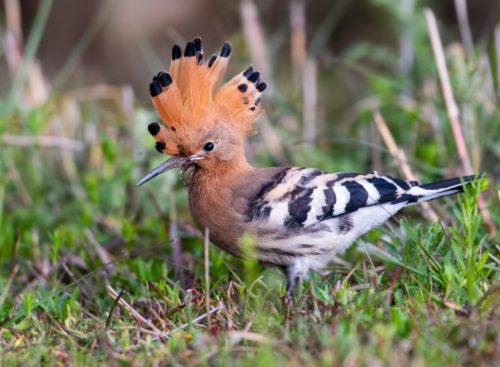
The scientific name for the Eurasian Hoopoe is Upupa epops, and it is a bird that is found throughout Europe, Asia, North Africa, and northern Sub-Saharan Africa. Adults are recognizable by their reddish-brown body with a white underbelly, black wings with white bars, and a black tail with a white tip. But the most distinctive feature is the bird’s crest, a black plume that stands straight up when the hoopoe is agitated or scared.
Golden Pheasant
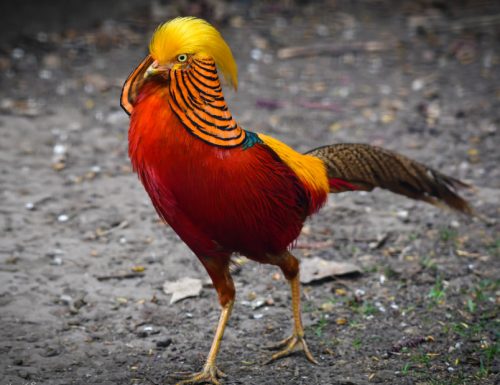
Western China is home to the Golden Pheasant, or Chrysolophus pictus as it is known in science. Although the unusual mohawks are more frequently seen on captive specimens, golden pheasants in the wild can also have these fascinating feathers. While females usually have more muted brown plumage, males have vivid red and gold plumage that contrasts sharply.
Great Blue Turaco
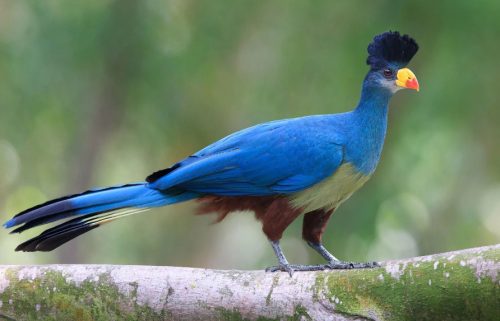
Known by its scientific name Corythaeola cristata, the Great Blue Turaco is a large native bird species of West and Central Africa. With a long tail and mostly blue and green feathers, its most notable feature is the eye-catching mohawk that is colored in bright red, yellow, and blue.
Great Bowerbird

Known by its scientific name, Chlamydera nuchalis, the Great Bowerbird is a unique species of bird found in the Austro-Papuan region of Australia and Papua New Guinea. These birds, who are well-known for their intricately designed bowers intended to entice partners, exhibit exceptional ingenuity and artistic sensibility.
Purple-Crested Turaco
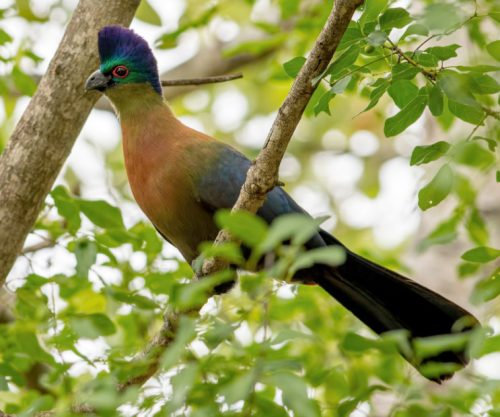
The Purple-Crested Turaco, scientifically designated as Tauraco porphyreolophus, is a vividly hued bird native to sub-Saharan Africa. Characterized by a striking purple crest on its head, the bird’s plumage predominantly features shades of green, complemented by accents of blue and red. This avian species graces the landscapes of Burundi, Kenya, Malawi, Mozambique, Rwanda, South Africa, Eswatini, Tanzania, Uganda, Zambia, and Zimbabwe, adding a burst of color and elegance to the diverse ecosystems it inhabits.
Red-Crested Turaco
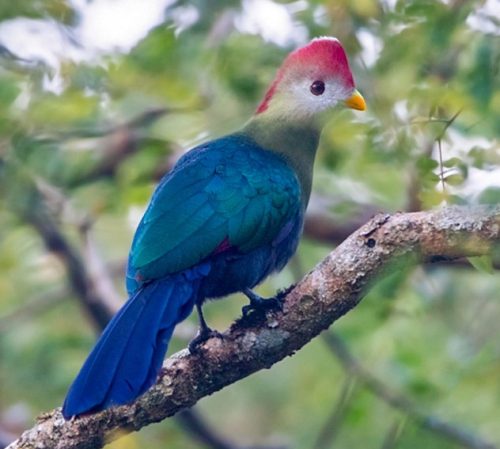
Known by its scientific name Tauraco erythrolophus, the Red-Crested Turaco is an African bird that is mostly found in Angola. Its remarkable look is attributed to its characteristic red mohawk, which contrasts sharply with its greenish-black body and extends from the beak to the rear of the head. These birds are well-known for their amazing vocal abilities and may be heard up to a mile away thanks to their booming calls.
Red-Whiskered Bulbul
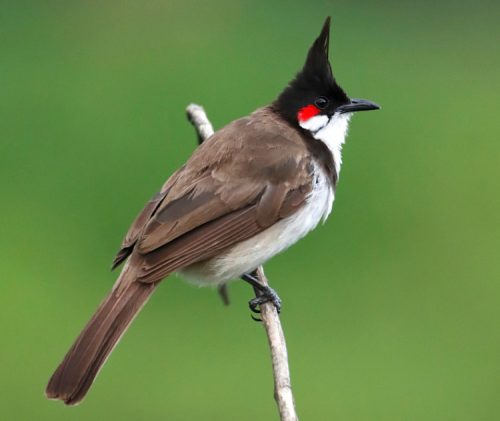
Pycnonotus jocosus, the scientific name for the Red-Whiskered Bulbul, is a little songbird that is indigenous to tropical Asia and belongs to the Old World babbler family. Easily identified by the crimson streaks on their cheeks that resemble a mustache or “whiskers,” these characteristics add to their distinct attractiveness. Red-whiskered bulbuls are popular pets in many Asian nations because of their mild demeanor, despite their name suggesting toughness.
Royal Flycatcher
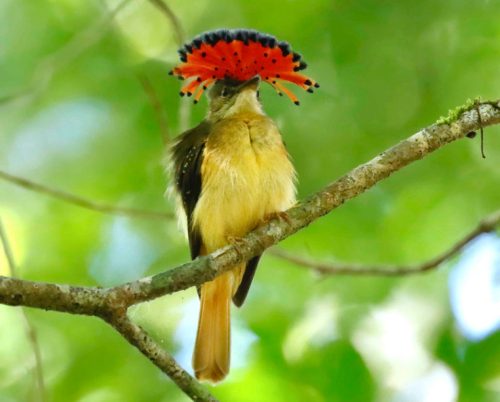
A little bird endemic to Central and South America, the Royal Flycatcher is a member of the Onychorhynchus genus. It can be found in the Amazon basin in northern Bolivia, eastern Peru, eastern Ecuador, eastern Colombia, Venezuela, the Guianas, and northern and western Brazil. The Royal Flycatcher is distinguished by its distinctive orange-red crest, which frequently supports it erect. This remarkable characteristic has several uses, such as luring potential partners and conveying strong feelings like rage or enthusiasm.
Smew
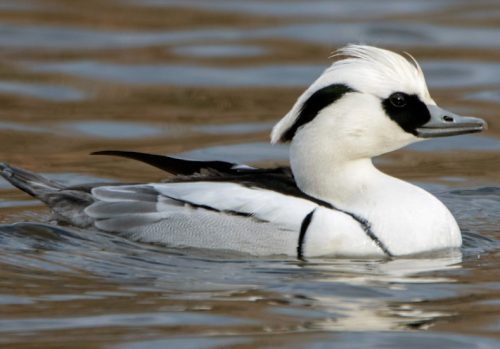
The Smew, scientifically named Mergellus albellus, is a distinctive duck found in northern Germany and the Low Countries. Easily recognizable by its unique plumage, the male Smew boasts a black head and back, contrasting with a white belly and breast. The standout feature is the mohawk-like stripe of black feathers down the center of its head, adding to the bird’s overall striking appearance.
Striated Heron
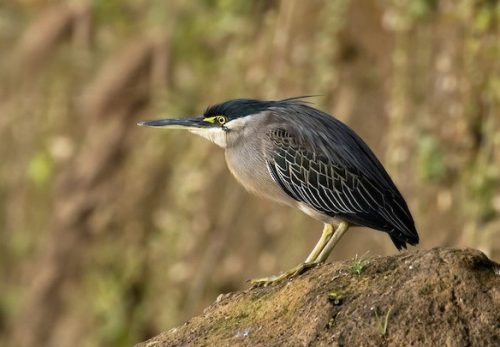
From eastern Panama to northern Argentina, the striated heron (Butorides striata) is a small to medium-sized bird that lives along the coast. These herons, which may be identified by their streaking back and wings, are found in the Americas, Europe, Africa, Asia, and Australia. Males have a more noticeable mohawk on their heads during the breeding season. These herons are normally silent, but when they feel threatened, they squawk loudly.
Tufted Titmouse
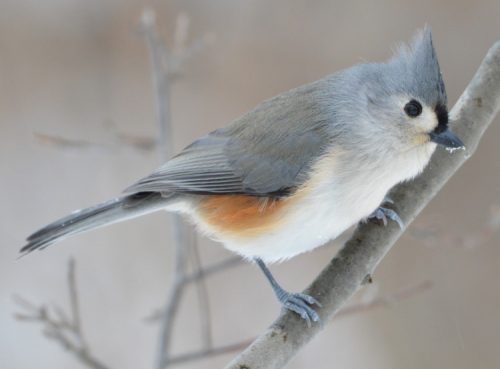
The tufted titmouse, or Baeolophus bicolor, is a little, endearing songbird that is found in forest areas throughout the eastern United States and southern Quebec and Ontario. This bird can be recognized by its characteristic mohawk-like tuft of feathers on top of its head. Its gray plumage is contrasted with white underparts and a black crown. The tufted titmouse is a beloved resident of the forested areas it calls home due to its charming look and melodic sings.
Victoria Crowned Pigeon
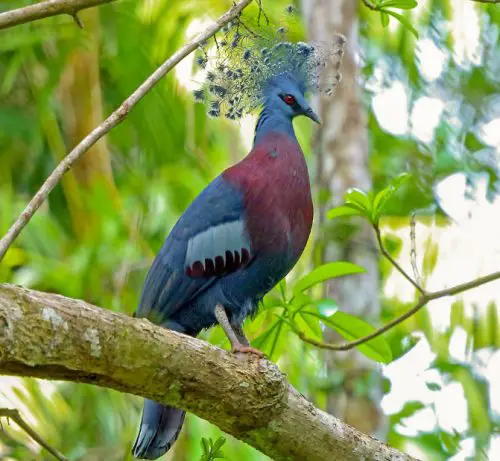
The magnificent Victoria crowned pigeon (Goura victoria) is a native of New Guinea’s lush woods. These large pigeons have a huge 24-inch body length. The Victoria crowned pigeon, which is easily recognized by its gorgeous blue-gray feathers, has an attractive feather crest on top of its head that resembles a chic mohawk. In the New Guinean birdlife, they have a remarkable and visually arresting presence due to their unusual combination of size and peculiar appearance.
Western Crowned Pigeon
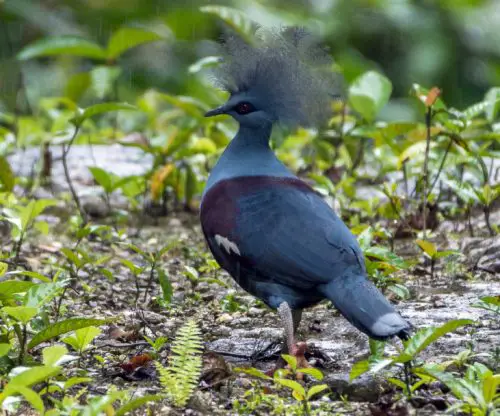
Goura cristata, sometimes known as the Western Crowned Pigeon, is a magnificent species of pigeon native to northwest New Guinea. Their stunning appearance is characterized by blue-grey plumage and brilliant red eyes, making them the largest species of pigeon. But what really makes the Western Crowned Pigeon stand out is its unusual mohawk-like feather crest, which lends a distinctiveness to its stately appearance in the New Guinean bird kingdom.
People Who Read This Also Read:



